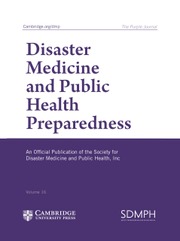No CrossRef data available.
Article contents
Understanding Vaccine Hesitancy at Montefiore Medical Center: Implications for Public Health Preparedness
Published online by Cambridge University Press: 20 March 2025
Abstract
Vaccine hesitancy among health care workers poses significant challenges to public health, particularly during times of crisis. This study investigates the factors influencing vaccine hesitancy among health care workers at Montefiore Medical Center, NY, with the aim of providing valuable insights to help shape and enhance future public health vaccination campaigns.
Utilizing Montefiore’s HER (Epic system) data from 2021–2023, linear logistic and multiple regression analyses were performed to assess correlations between demographic variables—such as age, race/ethnicity, job category, and county of residence—and vaccine uptake for both influenza and COVID-19 vaccines. Data were sourced from EPIC and Cority employee datasets. Missing demographic data were imputed where possible. The study population comprises a diverse workforce of 21 331 health care workers, encompassing a wide range of clinical and non-clinical roles.
Key predictors of vaccine hesitancy included prior influenza vaccination status, age, race/ethnicity, job title, and county of residence. Workers vaccinated against influenza were 6.2% more likely to receive the COVID-19 vaccine. Younger health care workers and racial groups like Black and biracial employees demonstrated higher levels of hesitancy, while Asian workers exhibited higher rates of vaccine acceptance.
Tailored communication strategies and educational programs are critical for addressing vaccine hesitancy, particularly among younger health care workers and specific racial groups. Building trust and improving transparency will be essential to increasing vaccine uptake and achieving broader public health objectives.
Keywords
- Type
- Original Research
- Information
- Copyright
- © The Author(s), 2025. Published by Cambridge University Press on behalf of Society for Disaster Medicine and Public Health, Inc


